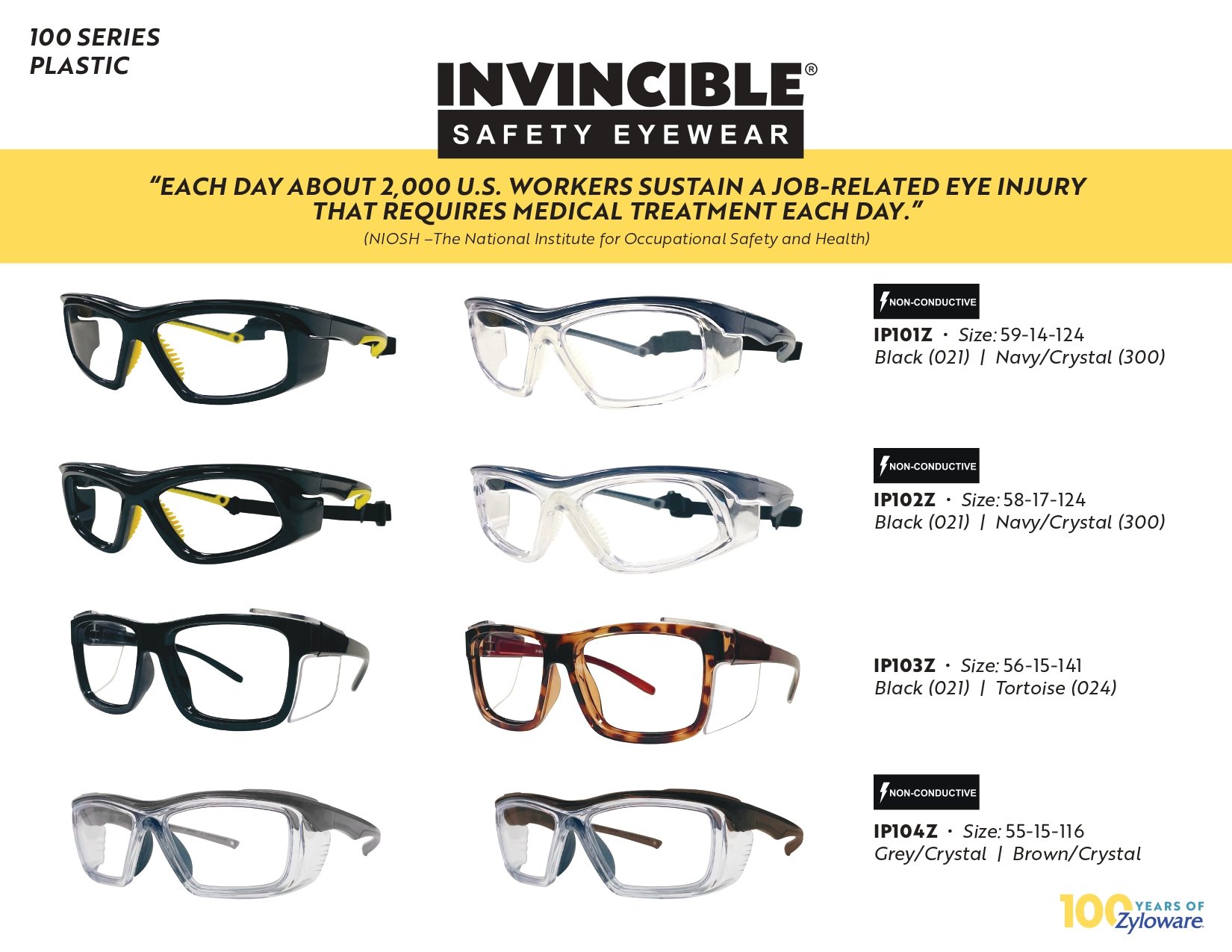The Importance of Wearing Safety Glasses to Protect Your Eyes in the Workplace
Eye protection is often an overlooked aspect of workplace health and safety, yet it is crucial in preventing injuries that can have long-term impacts on vision and quality of life.
Whether you work in construction, manufacturing, healthcare, or a laboratory, your eyes are constantly exposed to potential hazards that can cause significant damage in an instant. Wearing safety glasses is a simple but essential practice that safeguards your eyes against these risks.
Why Eye Protection Matters
Eye injuries are more common than you might think. According to the National Institute for Occupational Safety and Health (NIOSH), about 2,000 workers sustain job-related eye injuries requiring medical treatment in the U.S. every day. These injuries can be caused by a range of hazards, including flying particles, chemical splashes, radiation, or even dust. Many of these injuries can be prevented or lessened in severity with the proper use of safety glasses.
Key Risks to Eye Safety in the Workplace:
Flying Debris: In industries such as construction, metalworking, or carpentry, flying particles from grinding, cutting, or hammering pose a significant risk. These tiny fragments can strike the eye, causing scratches, punctures, or even blindness.
Chemical Splashes: Those working with chemicals, whether in labs, cleaning services, or industrial settings, are at risk of splashes that can cause severe burns or permanent damage to the eyes.
Radiation Exposure: Workers in welding, healthcare, or those exposed to UV light can suffer burns or cataracts from prolonged exposure to radiation without proper eye protection.
Dust and Airborne Particles: Even in seemingly low-risk environments, dust, dirt, or small airborne particles can cause irritation or infection if they come into contact with the eyes.
Benefits of Wearing Safety Glasses
Prevention of Eye Injuries: The most obvious benefit of wearing safety glasses is protection against eye injuries. Safety glasses act as a barrier, blocking out harmful substances before they can make contact with your eyes.
Improved Vision and Productivity: Wearing proper eye protection can improve visibility in challenging conditions, such as bright lights or dusty environments, allowing you to perform your job more effectively and safely.
Cost Savings: Eye injuries can be costly, both in terms of medical bills and lost productivity. Preventative measures like safety glasses help reduce these costs, making them a smart investment for any workplace.
Compliance with Safety Standards: Many industries are required by law to provide eye protection for their employees. Wearing safety glasses ensures that you’re compliant with Occupational Safety and Health Administration (OSHA) standards and helps your employer avoid fines.
Choosing the Right Safety Glasses
Not all safety glasses are created equal. Selecting the right pair is crucial to ensuring maximum protection and comfort. Here are a few factors to consider:
Lens Material: Polycarbonate lenses are highly impact-resistant, lightweight, and provide UV protection, making them a popular choice.
Frame Design: Wraparound designs offer additional side protection, which is essential for environments with flying debris.
Anti-Fog and Scratch-Resistant Coatings: These features enhance the longevity of the glasses and improve vision in various conditions.
Prescription Options: For those who wear corrective lenses, prescription safety glasses provide the necessary vision correction along with eye protection.
Best Practices for Eye Protection in the Workplace
Conduct Regular Risk Assessments: Identify potential eye hazards in your workplace and ensure that all employees are aware of them.
Provide Adequate Training: Make sure employees know how to properly use and maintain their safety glasses.
Encourage Consistent Use: Safety glasses are only effective when worn consistently. Promote a culture of safety by leading by example and enforcing eye protection policies.
The importance of wearing safety glasses in the workplace cannot be overstated. They are your first line of defense against a range of eye hazards that can cause temporary or permanent vision loss. By choosing the right safety glasses and wearing them consistently, you are taking a proactive step to protect one of your most valuable senses—your vision. Don’t take your eyes for granted; make safety glasses a non-negotiable part of your daily work attire



